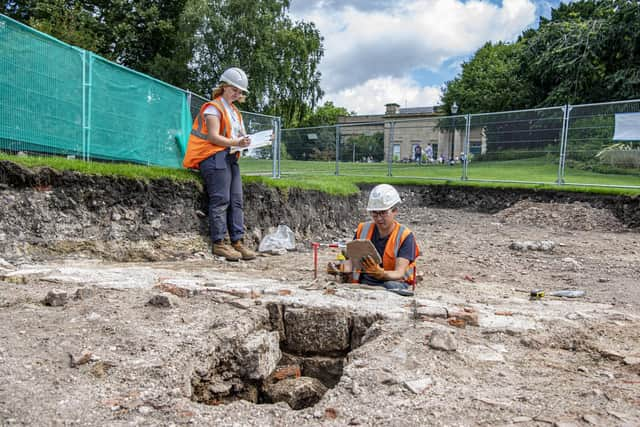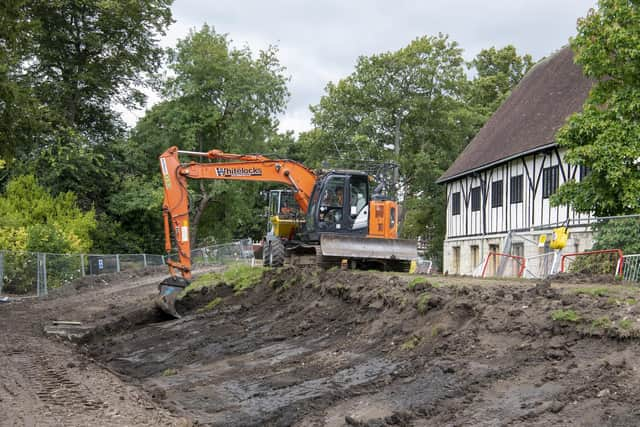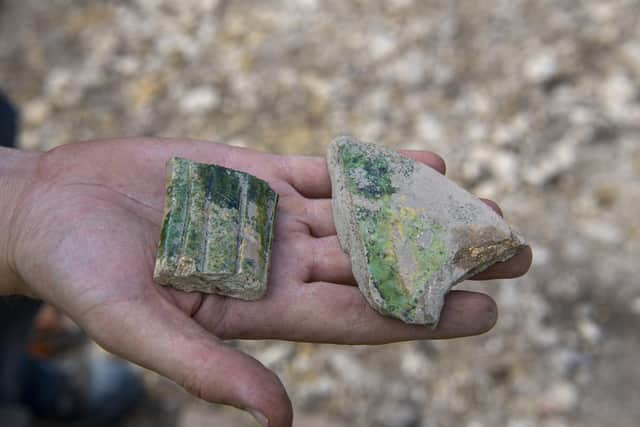Archaeological dig at Museum Gardens in York reveals lost buildings that were once part of medieval St Mary's Abbey
A team from York Archaeological Trust are currently based in Museum Gardens, where the Environment Agency will soon start work a major upgrade of the flood embankment as part of the York Flood Alleviation Scheme.
Both the Environment Agency and City of York Council recognised the historical importance of the area, which was once the grounds and precincts of St Mary's Abbey, and invited experts to survey the site for ancient remains.
Advertisement
Hide AdAdvertisement
Hide AdThe dig began in July and details of some of the preliminary findings have now been revealed.


York Archaeological Trust staff hoped to find traces of medieval buildings that were once part of the abbey complex, of which The Hospitium is the only survivor still intact today. There had not been investigations on the site previously because it had never been subject to development.
Initially, topsoil stripping revealed pottery and other items dating from the 19th century, when the Yorkshire Philosophical Society first landscaped the area as a botanical garden.
Yet below the Victorian layer was evidence of earlier activity. Across the trench is rubble including limestone roof and floor tiles, suggesting that several buildings were demolished following the Dissolution of the Monasteries in the 1530s. However, this razing could have taken place at any time up until the 1830s, when the garden landscaping began.
Advertisement
Hide AdAdvertisement
Hide AdThe Hospitium was renovated around this time, but historians are aware that several other buildings would have stood on the south side of the precinct. Short sections of medieval wall uncovered during the dig suggest that these structures extended east from The Hospitium - a lodging house for lay guests of the monastery which historians believe may have also acted as a warehouse for goods delivered through the river gate.


York Archaeological Trust project manager Ben Reeves explained: "This area had never been developed, and our principle is that we don't disturb unless necessary. We won't be going any deeper than we need to and only to the same level as the construction work.
"We know that in the 19th century, buildings such as stables were demolished, and there could have been outbuildings from all periods. We've identified some wall remains and are investigating them.
"We expected to find some form of remains, and our aim is to record and re-bury them. Nothing will be removed or damaged.
Advertisement
Hide AdAdvertisement
Hide Ad"It's difficult to say when the buildings were cleared - was it in the aftermath of the Dissolution or much later? In the 1830s did they decide they wanted to keep The Hospitium but not the others?


"It was a relief to find the structures below the level of the trench so that their discovery won't impact on the scheme. They will be covered over and preserved."
The dig is expected to conclude by the end of the month, after which the site will be returned to Environment Agency contractors BAM.